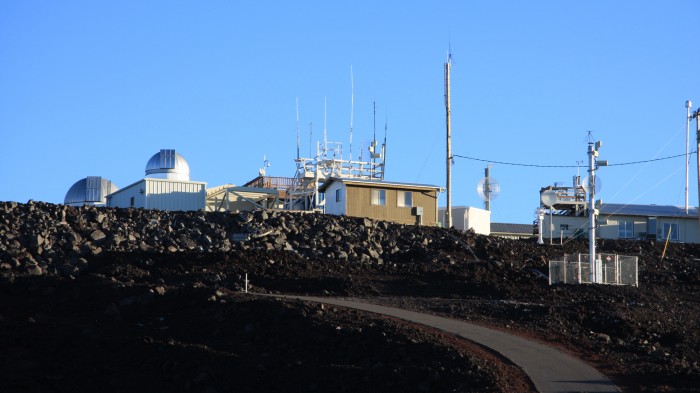Carbon Dioxide in the Atmosphere Has Passed a Worrying Threshold
Official word is in on atmospheric carbon dioxide concentrations for 2015. It’s not good news.
The World Meteorological Organization’s greenhouse-gas bulletin shows that 2015 was the first year in which levels of carbon dioxide reached 400 parts per million on average across the globe. Part of what pushed the planet over this threshold was El Niño, which, according to the WMO, “reduced the capacity of ‘sinks’ like forests, vegetation and the oceans to absorb CO2.”
But even when those sinks regain their ability to absorb carbon dioxide, warns the WMO secretary-general, Petteri Taalas, emissions will still need to be cut. “The El Niño event has disappeared. Climate change has not,” he explained. “Without tackling CO2 emissions, we cannot tackle climate change and keep temperature increases to below 2 °C above the preindustrial era.”

The figure of 400 parts per million is largely symbolic: carbon dioxide levels alone don’t dictate global temperature rises, which are the main concern we face. But they do play a leading role, and crossing this threshold is psychologically important for environmentalists and politicians alike.
Unfortunately, it’s not the first piece of bad news about carbon dioxide concentrations to come of late. In September—typically the month in which levels reach a minimum—they failed to drop below the 400 mark. According to measurements from the greenhouse-gas monitoring station in Mauna Loa, Hawaii, cited by the new report, levels are expected to stay above that figure for the rest of the year, too.
In fact, the WMO predicts that carbon dioxide concentrations are now unlikely to fall below 400 parts per million for “many” generations. “The year 2015 ushered in a new era of optimism and climate action with the Paris climate-change agreement,” Taalas said. “But it will also make history as marking a new era of climate-change reality with record high greenhouse-gas concentrations.”
At least the Paris climate agreement is finally swinging into action—and not a moment too soon.
(Read more: WMO Greenhouse Gas Bulletin, “The Paris Climate Pact Is Officially Go”)
Keep Reading
Most Popular
Large language models can do jaw-dropping things. But nobody knows exactly why.
And that's a problem. Figuring it out is one of the biggest scientific puzzles of our time and a crucial step towards controlling more powerful future models.
The problem with plug-in hybrids? Their drivers.
Plug-in hybrids are often sold as a transition to EVs, but new data from Europe shows we’re still underestimating the emissions they produce.
Google DeepMind’s new generative model makes Super Mario–like games from scratch
Genie learns how to control games by watching hours and hours of video. It could help train next-gen robots too.
How scientists traced a mysterious covid case back to six toilets
When wastewater surveillance turns into a hunt for a single infected individual, the ethics get tricky.
Stay connected
Get the latest updates from
MIT Technology Review
Discover special offers, top stories, upcoming events, and more.